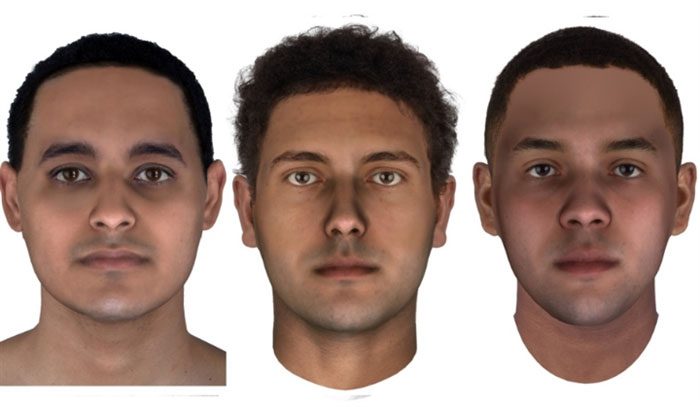Genetic researchers have revealed a detailed 3D rendering of the faces of three Egyptian men who lived over 2,000 years ago, thanks to DNA extracted from their mummies.

Reconstructed images of JK2134, JK2888, and JK2911. (Photo: Parabon NanoLabs).
The mummies of these three men were excavated in the vicinity of Abusir el-Meleq, an ancient community along the Nile River in Egypt.
They have been identified as JK2134, JK2888, and JK2911, living between 2,000 and 2,800 years ago. They died at around the age of 25.
Their DNA was previously sequenced in 2017 at the Max Planck Institute in Germany.
Since then, researchers at Parabon NanoLabs—a DNA phenotyping service provider based in Reston, Virginia—have used this genetic information to create 3D models of the faces of JK2134, JK2888, and JK2911 through a process known as DNA phenotyping.
According to Parabon, certain features such as skin color and eye color were reconstructed based on genetic markers in their genomes, while other characteristics were measured based on what remained of their bodies.
Parabon’s digital reconstructions show that the three men had light brown skin with dark eyes and hair. They are genetically more similar to modern Mediterranean populations than to contemporary Egyptians.
Parabon unveiled the reconstructed faces at the 32nd International Symposium on Human Identification in Orlando, Florida, in mid-September.





















































